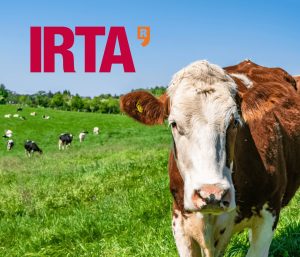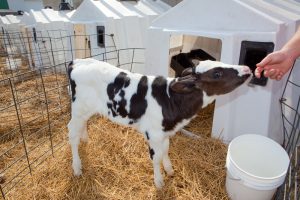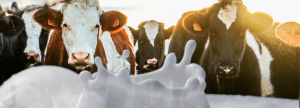 08 Jun 2023
08 Jun 2023
Introduction
Antibiotic residues in milk pose significant health risks and can result in detrimental consequences for both consumers and the dairy industry. The use of antibiotics in livestock, including dairy cows, is a common practice to treat and prevent infections. However, the improper withdrawal of these antibiotics before milking can lead to residues in the milk, which can have adverse effects on human health and contribute to the emergence of antibiotic resistance. As a result, stringent regulations and quality standards have been implemented to ensure the safety and integrity of milk products.

Health Risks of Antibiotic Residues in Milk
The presence of antibiotic residues in milk is a serious concern due to its potential to cause allergic reactions, toxicity, and the development of antibiotic-resistant bacteria in humans. When consumed, these residues can adversely affect individuals who are sensitive or allergic to specific antibiotics, leading to allergic reactions ranging from mild symptoms to severe complications. Furthermore, the continuous exposure to low levels of antibiotics through milk consumption can contribute to the development of antibiotic resistance, making infections more difficult to treat effectively.

Economic Losses and Environmental Implications
![]() Beyond the health risks, the presence of antibiotic residues in milk leads to significant economic losses. Milk containing antibiotic residues cannot be sold for human consumption, resulting in the complete discard of affected milk batches. This not only represents a financial loss for dairy farmers but also disrupts the supply chain and affects the overall profitability of the dairy industry. Moreover, the disposal of large quantities of discarded milk can have environmental implications, further adding to the negative consequences of antibiotic residue contamination.
Beyond the health risks, the presence of antibiotic residues in milk leads to significant economic losses. Milk containing antibiotic residues cannot be sold for human consumption, resulting in the complete discard of affected milk batches. This not only represents a financial loss for dairy farmers but also disrupts the supply chain and affects the overall profitability of the dairy industry. Moreover, the disposal of large quantities of discarded milk can have environmental implications, further adding to the negative consequences of antibiotic residue contamination.
Revaluing Discarded Milk: Innovative Approaches
To address these challenges, innovative approaches and research initiatives have been undertaken to develop methods for revaluing discarded milk by effectively degrading antibiotic residues. By implementing advanced techniques, such as enzymatic nanoparticles, it becomes possible to eliminate antibiotic residues and repurpose the milk for other valuable applications, such as feeding calves or producing dairy products with high nutritional value. These endeavors aim to not only safeguard consumer health but also minimize economic losses and promote sustainability within the dairy sector.
Study: Degradation of Antibiotic Residues in Waste Milk
A research team from the Ruminant Production program at IRTA has been working on an innovative system based on enzymatic nanoparticles to eliminate traces of antibiotics from the milk of cows that have been treated for infections. The goal is to repurpose the milk as a high-nutritional value product for calves and prevent the development of antibiotic resistance, which has become a global health threat affecting both animals and humans.

Supported by the Department of Climate Action, Food, and Rural Agenda of the Government of Catalonia, the project strives to showcase to the industry the potential of revaluing waste milk using this groundbreaking approach. This initiative encompasses a system that is straightforward to implement, highly effective, and economically viable. Its primary objective is to degrade antibiotic residues found in waste milk, transforming it into a suitable and nourishing feed for calves.
Research Process and Benefits
In order to accomplish this objective, the Ruminant Production program research team at IRTA will generate enzymatic beta-lactamase nanoparticles within the laboratory setting. These nanoparticles utilize the power of beta-lactamase, an enzyme capable of rendering antibiotics from the beta-lactam family (such as penicillins, cephalosporins, monobactams, and carbapenems) inactive. Following this phase, the team will proceed to treat waste milk obtained from three distinct farms located in the province of Girona. A comparative analysis will be conducted to evaluate the presence of antibiotic residues in the waste milk prior to and subsequent to the treatment involving the nanoparticles.
Double Benefit for Livestock
The treatment of waste milk and the elimination of antibiotic residues offer significant advantages to farms. Firstly, it helps prevent the occurrence of recurrent and challenging-to-eradicate infections commonly caused by microorganisms with resistance to multiple drugs. Mastitis, affecting approximately 10% of dairy cows, is the prevailing infection within the industry. By effectively treating waste milk and removing antibiotic residues, the risk of these infections can be minimized, ensuring the well-being and health of the livestock.

Secondly, repurposing treated waste milk as a feed source for calves promotes the implementation of a circular economy within farms. Instead of discarding the milk, it is reused in a valuable manner, fostering improved growth and productivity among calves. The high nutritional value of the milk contributes to the positive outcomes, benefiting both the calves’ fattening process and their future milk production. This not only enhances the economic viability of the farms but also aligns with sustainable practices by minimizing waste and maximizing resource utilization.
The Significance of the Project
The significance of the project should not be overlooked, considering the substantial quantity of wasted milk in the dairy industry. With over 780,000 registered dairy cows in Spain, each typically producing a minimum of 30 liters per day, the volume of milk going to waste is considerable. By addressing the presence of antibiotic residues in milk and implementing revalorization techniques, such as the degradation of antibiotic residues, the project aims to mitigate the risks associated with wasted milk while maximizing its potential benefits for livestock.

Conclusions
You may also like to read: “Mineral nutrition and its association with mastitis in dairy herds.”
Source: IRTA
Subscribe now to the technical magazine of animal nutrition
AUTHORS

Nutritional Interventions to Improve Fertility in Male Broiler Breeders
Edgar Oviedo
The Use of Organic Acids in Poultry: A Natural Path to Health and Productivity
M. Naeem
Synergistic Benefits of Prebiotics and Probiotics in Poultry, Swine, and Cattle
Gustavo Adolfo Quintana-Ospina
Hybrid Rye Potential in Laying Hen Feed Rations
Gwendolyn Jones
A day in the life of phosphorus in pigs: Part I
Rafael Duran Giménez-Rico
Use of enzymes in diets for ruminants
Braulio de la Calle Campos
Minerals and Hoof Health in the Pregnant Sow
Juan Gabriel Espino
Impact of Oxidized Fats on Swine Reproduction and Offspring
Maria Alejandra Perez Alvarado